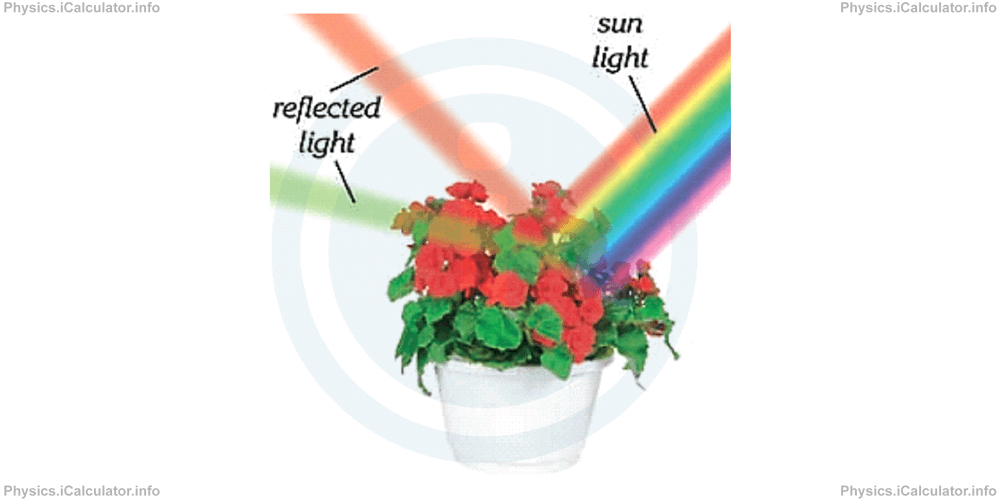Menu
Physics Lesson 12.6.1 - How Do We See the Colours of Objects?
Please provide a rating, it takes seconds and helps us to keep this resource free for all to use
Welcome to our Physics lesson on How Do We See the Colours of Objects?, this is the first lesson of our suite of physics lessons covering the topic of Polarization of Light, you can find links to the other lessons within this tutorial and access additional physics learning resources below this lesson.
How Do We See the Colours of Objects?
It is a matter of fact that light coming to us from the Sun has white colour. This means the light produced by the Sun includes all possible wavelengths of EM radiation. Most of this radiation (especially high frequency EM waves such as gamma, X and UV radiation) is reflected back by the atmosphere. Therefore, only visible light and below can reach the Earth surface due to their higher amplitudes.
When the white light strikes an object, most of the incident radiation is absorbed by the object itself. This contributes in an increase in object's temperature as EM radiation brings energy with it. As a result, the object becomes hot. Only the light waves that correspond to the object's colour(s) is (are) reflected by the objects surface. As a result, the light waves corresponding to the object's colour comes to our eyes through reflection. This is how we see the objects around us.

In the above figure, leaves reflect only the green light while absorbing all the other colours coming from the sunlight in the form of white light. This is why they look green.
An object appears black when it absorbs all the colours of the spectrum of visible light falling upon it. A black object reflects no light. On the other hand, if an object reflects all the incident light colours falling, it appears white, as white objects absorb none of the colours of the EM spectrum.
You have reached the end of Physics lesson 12.6.1 How Do We See the Colours of Objects?. There are 6 lessons in this physics tutorial covering Polarization of Light, you can access all the lessons from this tutorial below.
More Polarization of Light Lessons and Learning Resources
Whats next?
Enjoy the "How Do We See the Colours of Objects?" physics lesson? People who liked the "Polarization of Light lesson found the following resources useful:
- Observation Feedback. Helps other - Leave a rating for this observation (see below)
- Optics Physics tutorial: Polarization of Light. Read the Polarization of Light physics tutorial and build your physics knowledge of Optics
- Optics Revision Notes: Polarization of Light. Print the notes so you can revise the key points covered in the physics tutorial for Polarization of Light
- Optics Practice Questions: Polarization of Light. Test and improve your knowledge of Polarization of Light with example questins and answers
- Check your calculations for Optics questions with our excellent Optics calculators which contain full equations and calculations clearly displayed line by line. See the Optics Calculators by iCalculator™ below.
- Continuing learning optics - read our next physics tutorial: The Doppler Effect
Help others Learning Physics just like you
Please provide a rating, it takes seconds and helps us to keep this resource free for all to use
We hope you found this Physics lesson "Polarization of Light" useful. If you did it would be great if you could spare the time to rate this physics lesson (simply click on the number of stars that match your assessment of this physics learning aide) and/or share on social media, this helps us identify popular tutorials and calculators and expand our free learning resources to support our users around the world have free access to expand their knowledge of physics and other disciplines.